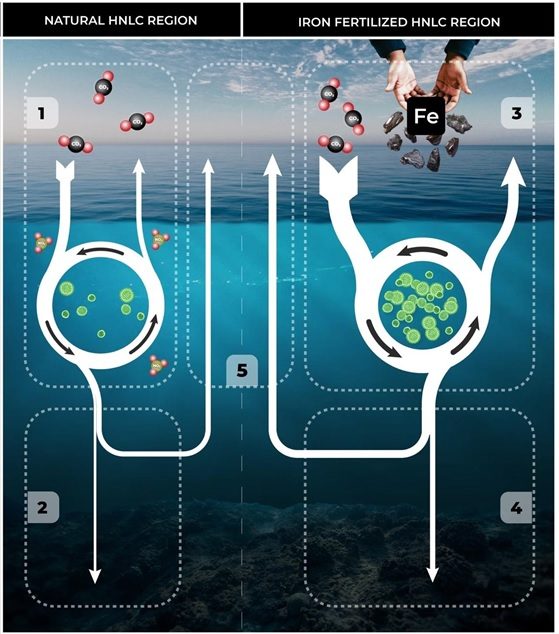Author: Tyler Rohr
Affiliations:
Current:
United States Department of Energy, Water Power Technologies Office, Washington D.C., USA
Past (but at time of original writing):
Massachusetts Institute of Technology, Department of Earth and Planetary Sciences, Cambridge, Massachusetts, USA
Woods Hole Oceanographic Institution, Department of Marine Chemistry and Geochemistry, Woods Hole, Massachusetts, USA
Abstract:
With substantive global action on climate change mitigation sputtering, some have begun to look at geoengineering as a possible alternative. Geoengineering is any deliberate, large-scale, manipulation of natural processes to affect the climate system, ostensibly to curb the effects of global warming. One such strategy is Southern Ocean Iron Fertilization, which seeks to remove carbon dioxide from the atmosphere by fertilizing the growth of marine phytoplankton in the ocean. Phytoplankton are microscopic plants that, like land-based plants, convert carbon dioxide into oxygen through photosynthesis. Together, marine phytoplankton produce half the oxygen we breathe. Further, when they die, they can sink out of the surface ocean and trap carbon in the deep ocean for hundreds of years. The goal of Southern Ocean Iron Fertilization is to increase this oceanic drawdown of carbon dioxide by stimulating marine phytoplankton growth by adding iron, an important nutrient, to large parts of the ocean where there is currently not enough iron to support growth. The notion of simply dumping dissolved iron into the ocean is seductively cheap compared to other forms of climate action, but it is not yet clear that fertilizing the Southern Ocean could actually create a sustainable carbon sink. A comprehensive review of the literature reveals that iron fertilization will almost certainly increase phytoplankton growth in the surface ocean, but it is much less clear how much of that carbon will sink out of the surface ocean and stay there versus how much will quickly end up back in the atmosphere. Given the lingering scientific uncertainty, it would be ill-advised to commercialize iron fertilization under emerging carbon offset markets. Offset markets allow companies or individuals to buy and sell activity that offsets their own emissions, either by sequestering carbon or reducing emissions elsewhere. Compliance offset markets, such as many proposed cap-and-trade frameworks, are carefully regulated to ensure activity is legitimate and appropriately compensated; however, voluntary offset markets, powered predominately by a sense of social responsibility, are not necessarily well regulated. Commercializing Southern Ocean Iron Fertilization on compliance offset markets is unlikely, and unadvisable, due to concerns over the strategy’s fundamental feasibility, the potential for unpredictable side-effects, and the inability to establish reliable baselines or accurately measure the full effects of fertilization, making it impossible to provide fair and consistent compensation. Never-the-less, recent history shows that fertilization activity on unregulated voluntary offset markets motivated by a the promise of an easy fix can, and will continue to, emerge. Continued research is needed to constrain the public perception and clarify the reality of an iron bullet.
Figure Caption: Idealized schematic of carbon cycling and the biological in a natural High Nutrient Low Chlorophyll Region (HNLC) and an iron fertilized HLNC. White arrows represent carbon transport. The addition of iron may dramatically increase surface biomass but only a small fraction of that is additional sequestered in the deep ocean or the sea floor.
Link: http://www.sciencepolicyjournal.org/uploads/5/4/3/4/5434385/rohr_jspg_v15.pdf

